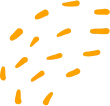🎯 What does this mean?
A hyperboloid of one sheet is a three-dimensional surface that forms a continuous, connected shape resembling an hourglass or cooling tower. It extends infinitely in the z-direction while maintaining circular or elliptical cross-sections that vary in size, creating a "waisted" appearance in the middle.
🎯 Geometric Interpretation
A hyperboloid of one sheet represents a connected surface that "pinches in" at its center and expands outward as it extends infinitely. Unlike its two-sheet counterpart, this surface is continuous and can be traversed without interruption. The surface exhibits negative curvature and serves as a perfect example of a ruled quadric surface.
\[ a \]
Semi-axis in x-direction - controls width of elliptical cross-sections
\[ b \]
Semi-axis in y-direction - controls height of elliptical cross-sections
\[ c \]
Scale parameter in z-direction - controls rate of expansion along axis
\[ (h, k, l) \]
Center coordinates - location of the minimum "waist" of the hyperboloid
\[ u \]
Radial parameter - controls distance from central axis in parametric form
\[ v \]
Angular parameter - determines position around circular cross-sections
\[ \text{Waist} \]
Smallest cross-section at the center - minimum radius of the hyperboloid
\[ \text{Asymptotic Cone} \]
Cone that hyperboloid approaches as distance from center increases
\[ \text{Generators} \]
Straight lines lying entirely on the surface - two families intersecting
\[ \cosh, \sinh \]
Hyperbolic functions used in parametric representation of the surface
\[ r(z) \]
Radius function - how cross-sectional radius varies with height
\[ \text{Rulings} \]
Two distinct families of straight lines that completely cover the surface
🎯 Essential Insight: A hyperboloid of one sheet is like a continuous hourglass or cooling tower - it pinches in at the middle and expands outward in both directions! 📊
🚀 Real-World Applications
🏭 Nuclear Engineering & Power Plants
Cooling Tower Design
Nuclear power plant cooling towers use hyperboloid shapes for optimal structural strength and thermal efficiency, creating natural draft airflow for heat dissipation
🏗️ Architecture & Structural Engineering
Modern Building Design
Hyperboloid structures in skyscrapers and bridges provide exceptional strength-to-weight ratios while creating visually striking architectural forms
📡 Telecommunications & Antennas
Reflector Design & Signal Processing
Hyperboloid reflectors in satellite dishes and radio telescopes focus electromagnetic waves efficiently for communication and astronomical observations
⚙️ Mechanical Engineering & Gears
Hypoid Gear Systems
Automotive differentials and industrial machinery use hyperboloid gear teeth geometry for smooth power transmission and reduced noise
The Magic: Engineering: Structurally efficient cooling towers and buildings, Architecture: Elegant forms with exceptional strength, Telecommunications: Optimal signal focusing and reflection, Mechanical: Smooth gear transmission systems
Before memorizing equations, develop this core intuition about hyperboloids of one sheet:
Key Insight: A hyperboloid of one sheet is like a continuous hourglass that you can walk around completely - it pinches in at the middle (the "waist") but stays connected, expanding outward as you move away from the center!
💡 Why this matters:
🔋 Real-World Power:
- Engineering: Cooling towers use hyperboloid shapes for optimal structural and thermal efficiency
- Architecture: Modern buildings utilize hyperboloid geometry for strength and aesthetic appeal
- Telecommunications: Antenna reflectors employ hyperboloid surfaces for signal focusing
- Manufacturing: Gear systems use hyperboloid tooth profiles for smooth operation
🧠 Mathematical Insight:
- Hyperboloids are quadric surfaces with mixed positive and negative terms
- Cross-sections perpendicular to axis are ellipses that grow with distance
- Doubly ruled surface - can be constructed entirely from straight lines
🚀 Study Strategy:
1
Visualize the Connected Shape 📐
- Start with: x²/a² + y²/b² - z²/c² = 1 (note the minus sign)
- Picture: Cooling tower or hourglass shape - connected throughout
- Key insight: "How does the surface curve inward then outward?"
2
Understand Cross-Sections 📋
- Horizontal cuts (z = constant): Ellipses that get larger as |z| increases
- Minimum ellipse at z = 0 with semi-axes a and b
- Vertical cuts through axis: Hyperbolas opening outward
3
Explore Ruled Surface Property 🔗
- Two families of straight lines lie entirely on the surface
- Can be constructed using only straight structural elements
- Through every point pass exactly two straight lines from different families
4
Connect to Applications 🎯
- Cooling towers: Optimal airflow and structural strength
- Architecture: Elegant buildings with maximum strength-to-weight ratios
- Engineering: Gear systems and mechanical components
When you see hyperboloids of one sheet as "connected hourglass surfaces," analytic geometry becomes a powerful tool for understanding structural engineering, architectural design, and the beautiful mathematics of ruled surfaces!
Memory Trick: "Hourglasses Open Naturally, Expanding Smoothly, Holding Every Element Together" - CONNECTED: Single continuous surface, WAIST: Minimum radius at center, EXPANDS: Gets larger moving away from center
🔑 Key Properties of Hyperboloids of One Sheet
📐
Connected Surface
Forms one continuous, unbroken surface throughout 3D space
Distinguished from hyperboloid of two sheets which has separate pieces
📈
Doubly Ruled Surface
Contains two families of straight lines lying entirely on surface
Can be constructed using only straight structural elements
🔗
Elliptical Cross-Sections
All horizontal cross-sections are ellipses with minimum size at center
Cross-sectional area increases quadratically with distance from waist
🎯
Asymptotic Behavior
Approaches an asymptotic cone as distance from center increases
Provides natural structural shape for engineering applications
Universal Insight: Hyperboloids of one sheet represent nature's solution for creating strong, continuous structures that distribute stress efficiently while maintaining elegant geometric properties!
Standard Form: x²/a² + y²/b² - z²/c² = 1 with negative z term creating the connected shape
Cross-Sections: Elliptical horizontally (growing with |z|), hyperbolic vertically through axis
Ruled Surface: Two families of straight lines enable construction from linear elements
Applications: Nuclear cooling towers, modern architecture, telecommunications, and mechanical engineering



